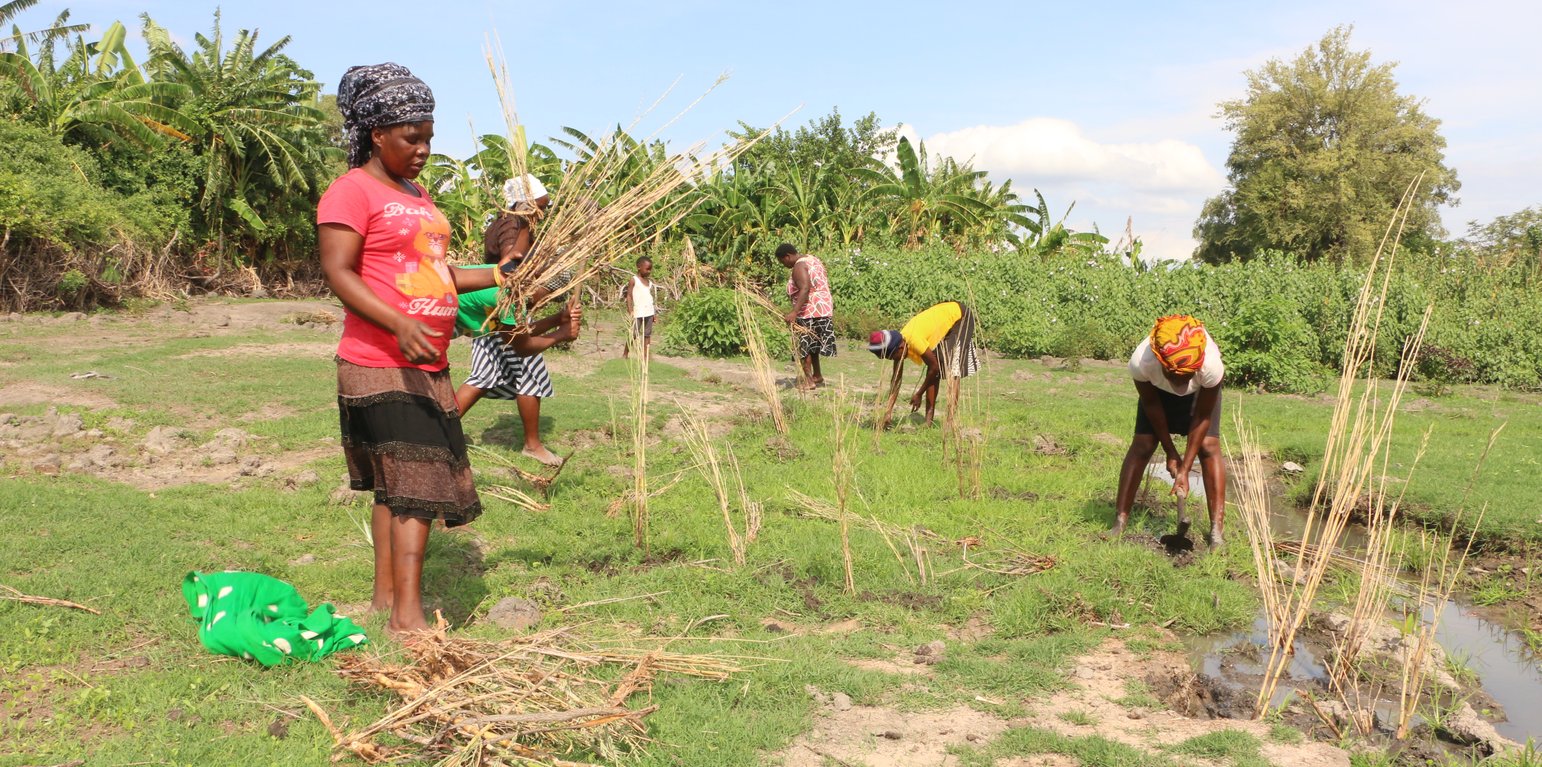



The Integrated Wetlands Biodiversity Conservation Project aims to restore wetlands and associated biodiversity. It is a 2-year project which started in June 2023 with the support of a USD 50,000.00 grant from the Global Environment Facility Small Grants Programme, implemented by the United Nations Development Programme (UNDP-GEFSGP). The approach strengthens the resilience of neighbouring community to climate change through developing lifelong skills and providing livelihood support. It targets those marginalized groups surrounding protected areas, who experience severe droughts due to high cases of human-wildlife conflicts, making them highly food insecure. The approach is simultaneously improving sustainable management and utilization of the Masibinta wetland and its catchment.
Technical activities are targeted at restoring Masibinta wetland’s ecological integrity by protecting the wetland, implementing conservation agriculture in its catchment, reforesting bare land, controlling and reshaping gullies to create small ponds, and removing a bushy invasive species (Ipomoea carnea) while making compost from its leaves and branches. The ponds increase the recharge of the wetland. This helps provide water to the community and at the same time acts as a barrier to soil erosion and epicenters for natural vegetative cover regeneration and biodiversity restoration. Land degradation neutrality is an overall goal.
Specific targets include:
(a) Protection, rehabilitation and conservation of 13 hectares of Masibinta wetlands, as well as reclamation of degraded land in and around the wetland, while increasing the capacity of the community members to conserve biodiversity.
(b) Increasing access of 387 households to adequate and clean water.
(c) Reduction of invasive species in the wetlands by 80%, and reclamation of 1000 m of gullies.
(d) Promotion of sustainable use and management of Masibinta wetland through regenerative agriculture, livelihood support and imparting lifelong skills to 50 youths (30 females and 20 males).
A variety of technical and social methods are employed:
(a) Grey and Green Infrastructure (GGI): hybrid restoration techniques that involve the combination of engineered structures and Nature-based Solutions (NbS).
(b) Regenerative agriculture: including mulching, mixed cultivation, crop rotation, agroforestry, use of organic manure in nutrition gardens, and zero tillage (“Maganko”).
(c) Incentives: monetary incentives to the community members who offer their labour.
(d) Self-mobilization.
(e) Peer-to-peer learning.
(f) Problem-solving.
The stages of implementation involved are:
(a) Baseline survey,
(b) Education and training of project support staff, stakeholders,
(c) Monitoring, Evaluation and Learning (MEL),
(d) Livelihood support,
(e) Protection of the wetland, then MEL,
(f) Borehole Drilling,
(g) Invasive species management, then MEL,
(h) Gully modification, and
(i) Evaluation and Learning.
The stakeholders involved and their roles are:
(a) Environmental Management Agency (EMA): Implement and monitor restoration activities in the wetland and assess the impact of barricading the gully on the environment.
(b) Forestry Commission (FC): Nursery establishment, management and tree planting.
(c) Agriculture and Rural Advisory Services (ARDAS): Train farmers on agroforestry, goat rearing, climate-smart agriculture, gully reclamation, and polyculture.
(d) Rural and Infrastructure Development Agency (RIDA): oversees all engineering work.
(e) Ministry of Youth Empowerment Development and Vocational Training (MYEDVT): Monitoring youth engagement and benefits.
(f) Ministry of Women Affairs Community Small and Medium Enterprises Development (MWACSMED): Tracked and monitored inclusion and entrepreneurship.
(h) United Nations Development Programme – Grant disbursement, monitoring and evaluating the implementation and sustainability of IWBCP at the national level in line with the GEFSGP expectations.
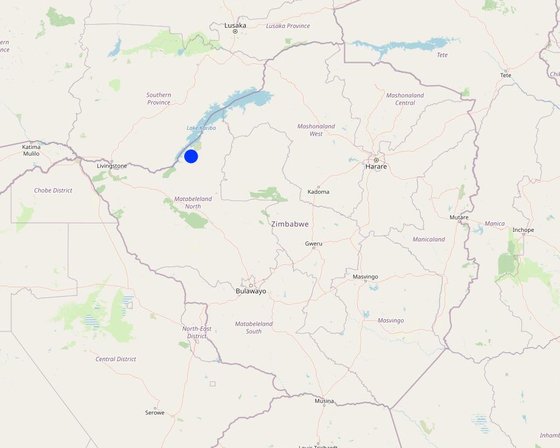
地点: Binga, Matebeleland North, 津巴布韦
启动日期: 2023
终止年份: 2025
方法的类型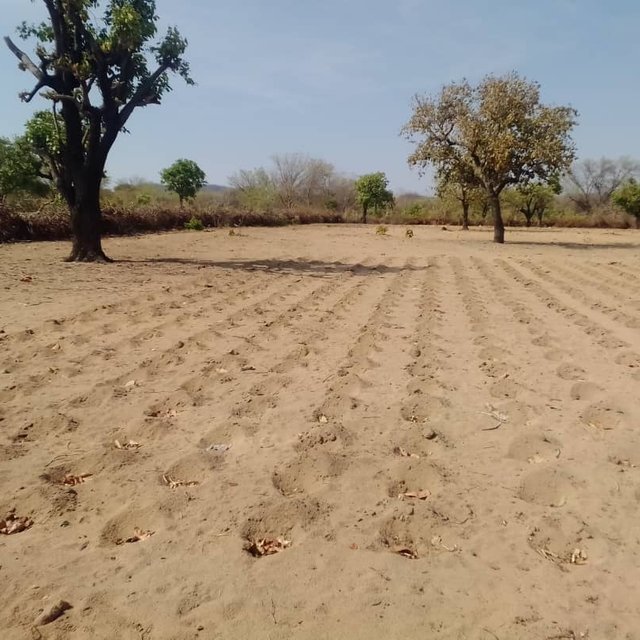
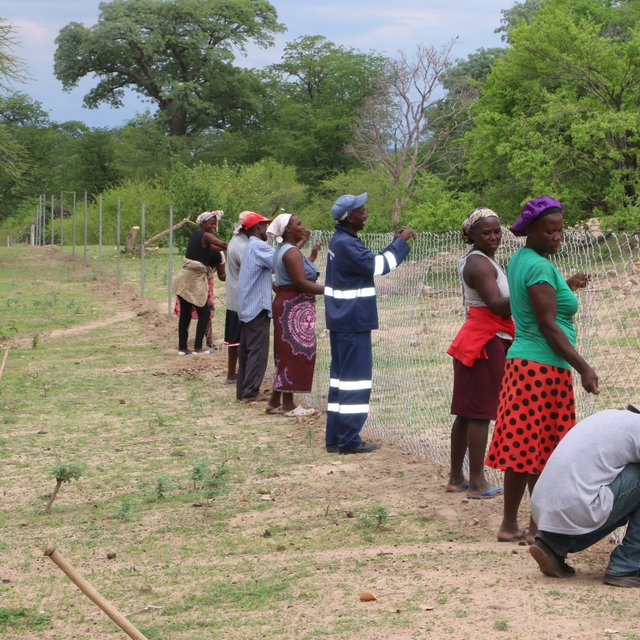
| 该方法涉及哪些利益相关者/执行机构? | 指定利益相关者 | 说明利益相关者的角色 |
| 当地土地使用者/当地社区 | Traditional leaders and community members | Community members provided labour and security of materials and food during the Approach's activities. They also monitored and evaluated the Approach and provided valuable lessons. Traditional leadership provided the approach's local oversight role, whipped members into line, provided Indigenous knowledge, and guided the implementation process in accordance with the values and beliefs of the Manjolo community. Traditional leadership was key in information dissemination and resolution of issues which would otherwise affect the success of the Approach |
| SLM专家/农业顾问 | Agriculture & Rural Development Advisory Services (ARDAS), ZimParks, Forest Commission, Environmental Management Agency (EMA), Small to Medium Enterprises, Ministry of Youth, Social Development, Ministry of Information, Ministry of Health and Child Welfare | Provided technical support, training community members, and local management committees. Supervising activities and evaluating the Approach |
| 地方政府 | Binga District Development Committee | Monitoring and Evaluation of the Approach Providing supportive framework and ensuring that the Approach keep in line with the district's development agenda |
Integrated Wetland Biodiversity Conservation Project (IWBCP) Implementation framework
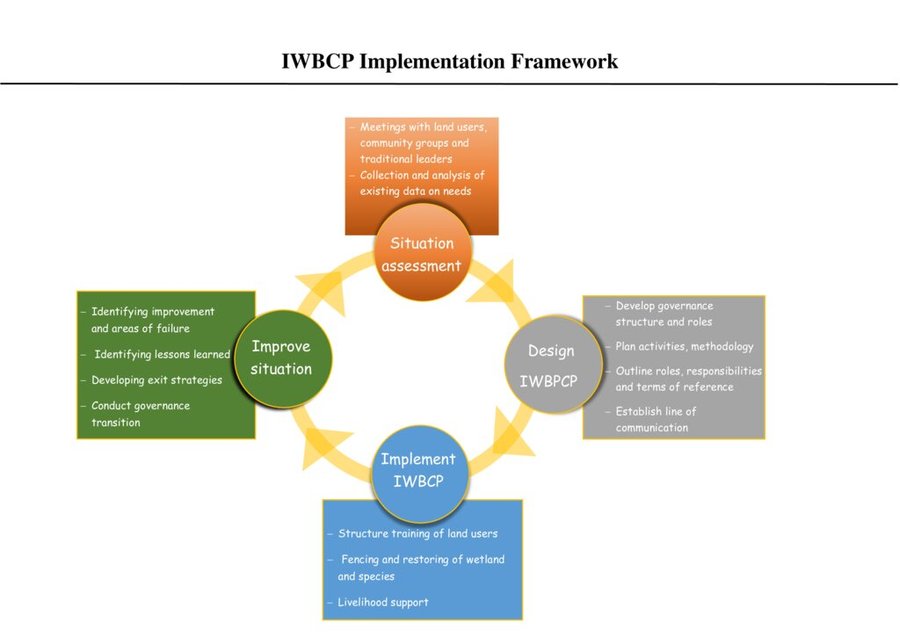
决策是由......做出的
决策是基于
Biodiversity conservation, project infrastructure management, sustainable land management, agroforestry, gully reclamation, conservation farming, climate change, and environmental policies
土地使用者的劳动力为
Monetary incentive (for activities which are yet to be done using the additional support from the G20 Global Land Restoration Initiative)
124 land users were trained, supported with seed imputes, and goats.
Decisions were made based on data gathered from community engagements, lessons learned from the before projects in the area and the surveys conducted as a baseline.
Land users have reclaimed 100 metres of gullies, implemented conservation cultivation, used nature-based approaches to restore the wetland
The use of Nature-based Solutions and indigenous knowledge reduced the cost of implementing the SLM as such approaches are cheaper in terms of cost. Approach improved coordination between the project management and land users through clearly defined roles and lines of communication
Mobilized finances from the Global Environment Facility Small Grants Programme through the United Nations Development Programme (UNDP-GEFSGP). Finances have also been mobilized from the G20 Global Land Initiative, though yet to be disbursed into SEWA's bank account.
124 land users were trained on SLM and were given kowledge material such as brochures.
Not much training of stakeholders was done. However the stakeholders drew lessons from the project and shared their experience during project progress update meetings.
Each and every stakeholder involved in the project had clearly defined roles and synergies
The fencing of wetland including the nutrition gardens and the development of the land users' constitution mitigated conflicts
Assisted women, youth and people with disability with female goats. These groups were trained under the same rood
Financial limitation reduced the engagement of youth in Manjolo as the effective method of engaging youth in Manjolo require a reasonable budget
The Approach has not yet tackled the issue
Through crop yields, and income generation projects.
Local market. Land users are supply Boarding School and a hospital with green vegetables
Boreholes Drilling couldn't find water.
The Approach did not look at energy
Through training and livelihoods support
In terms of human sustainability, the training that the Land Users have received, skills and knowledge that they have gained will enable them to continue with the project activities without any external support. The involvement of the Land Users in decision making structures and programmes will enable Land Users to make and implement key decisions beyond the external support. The income generating projects and the Internal Savings and Lending Schemes introduced under the Approach will ensure financial sustainability. The training of the stakeholders by the Approach provide the technical sustainability.